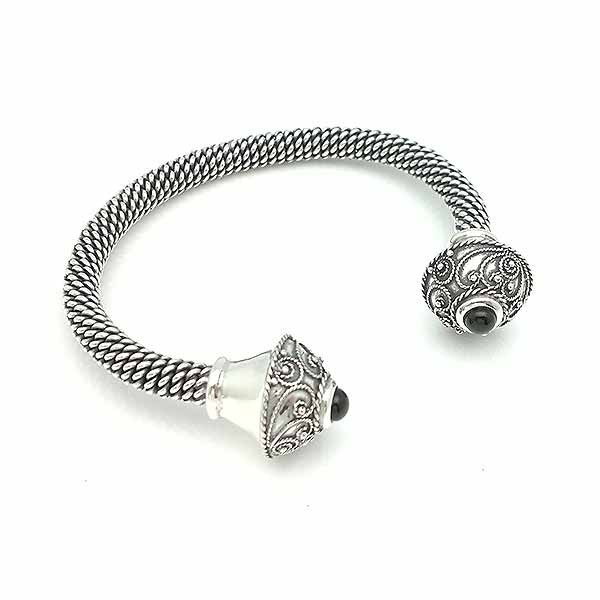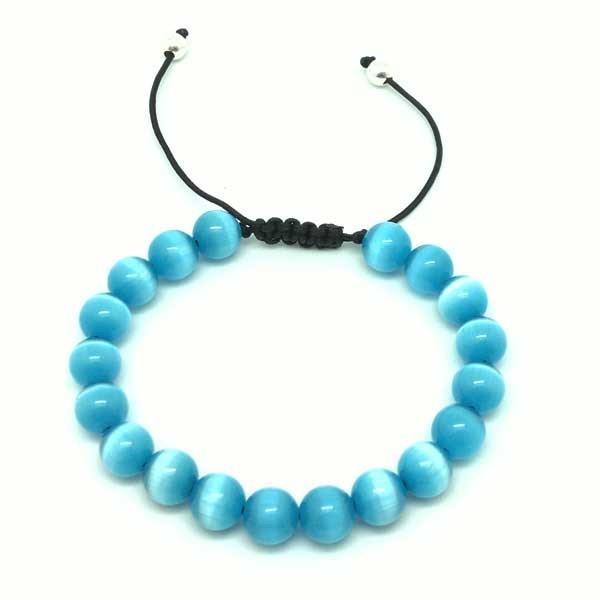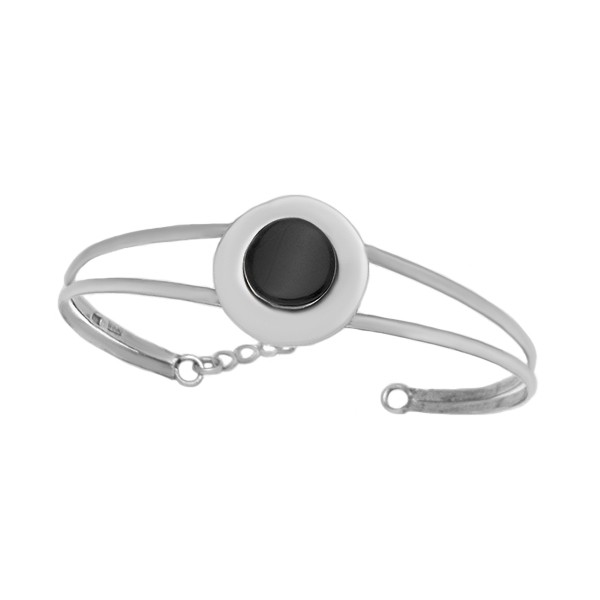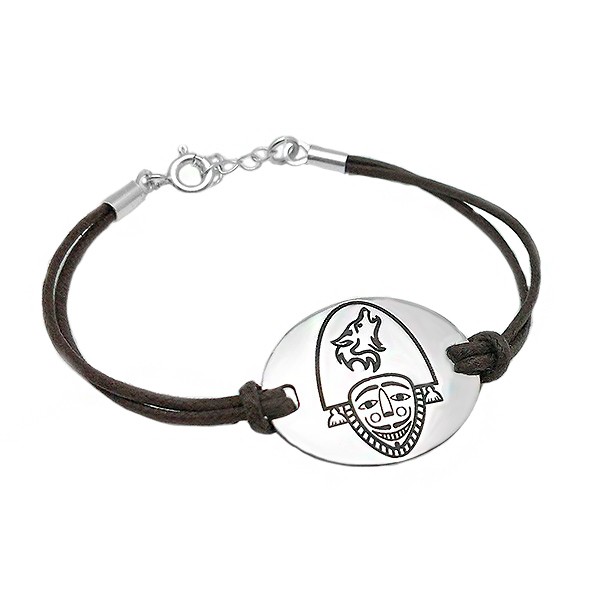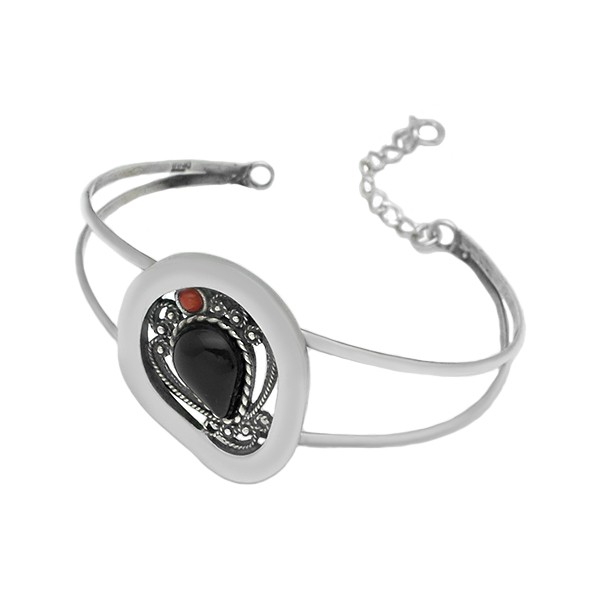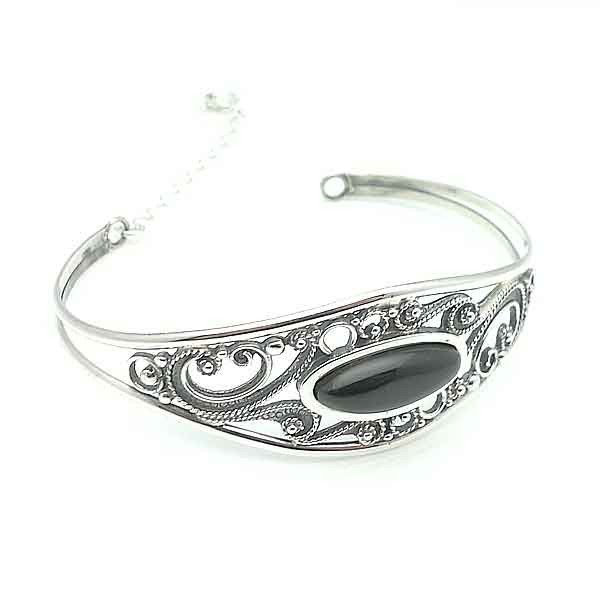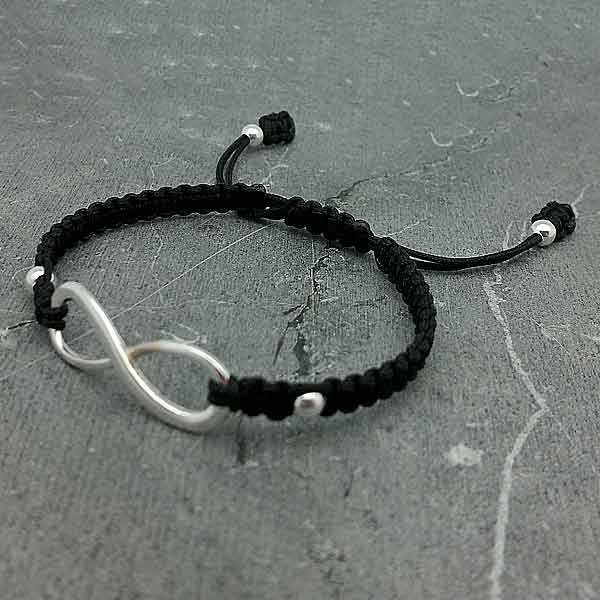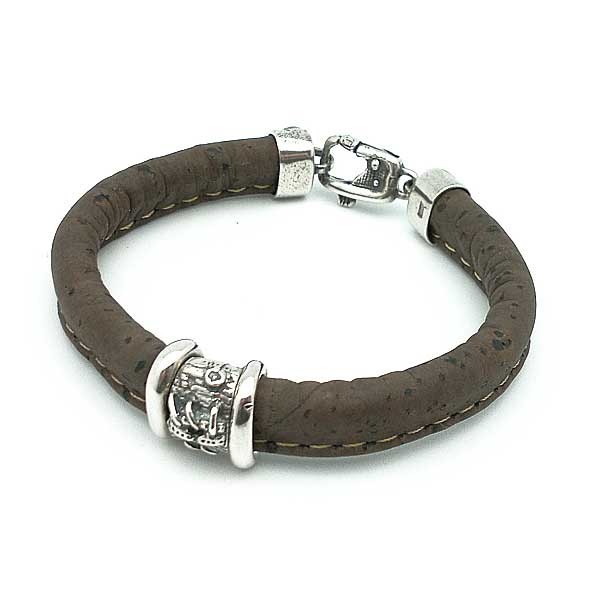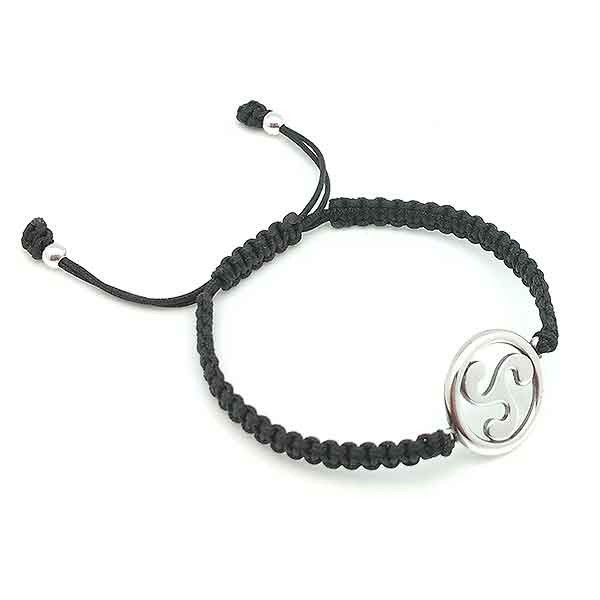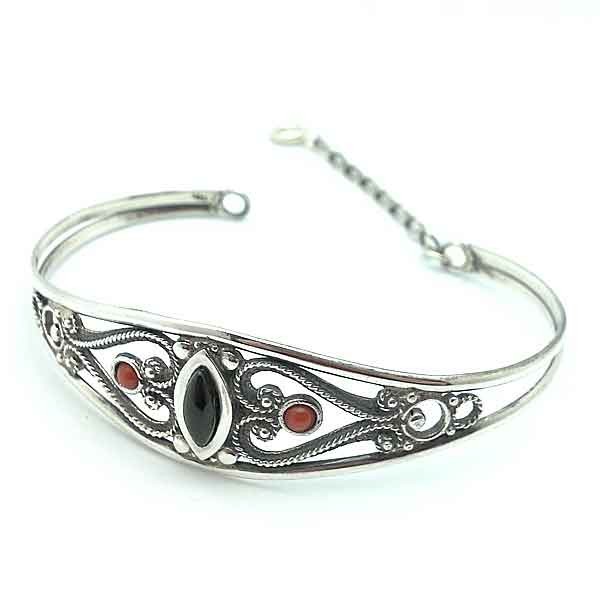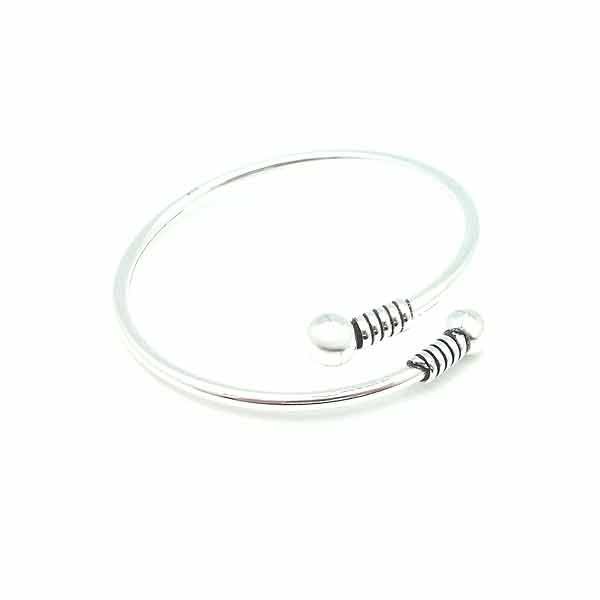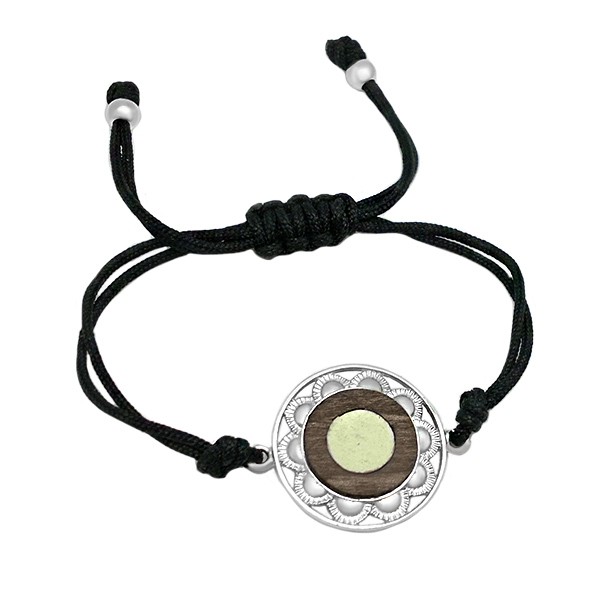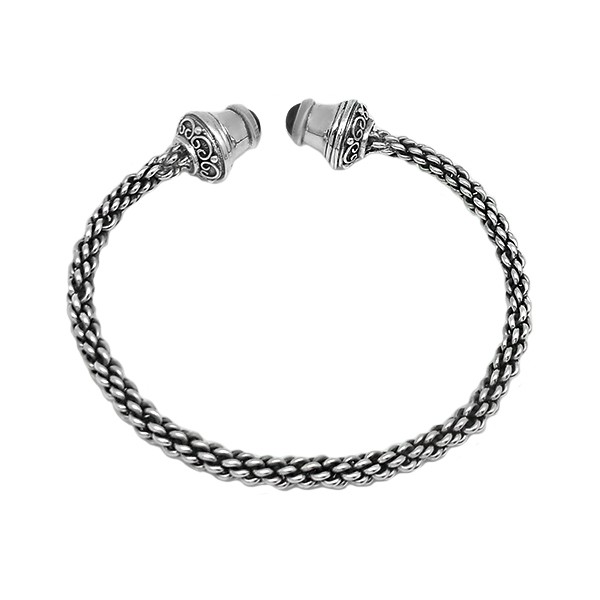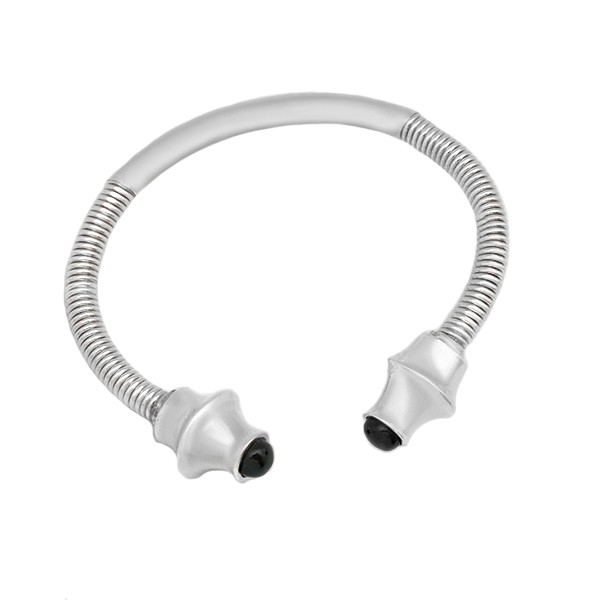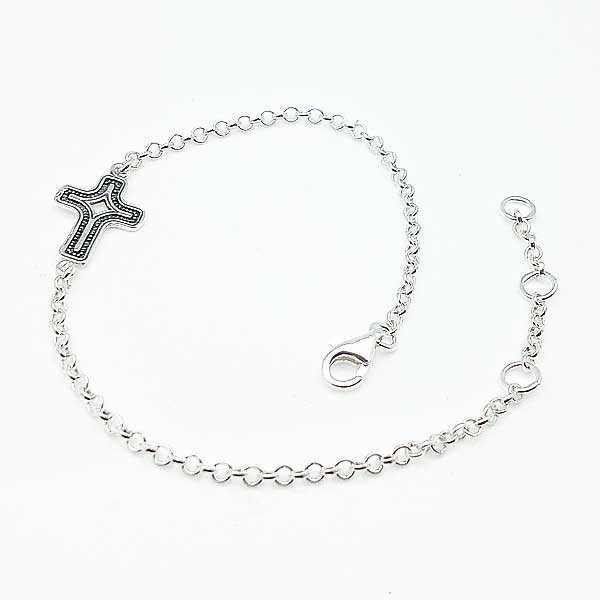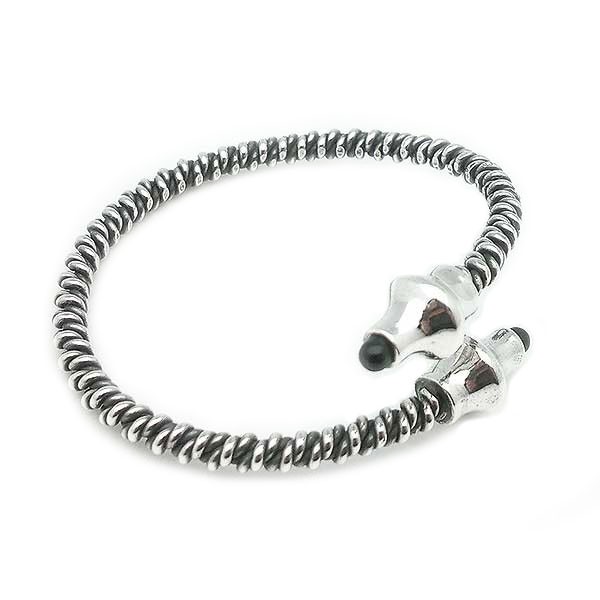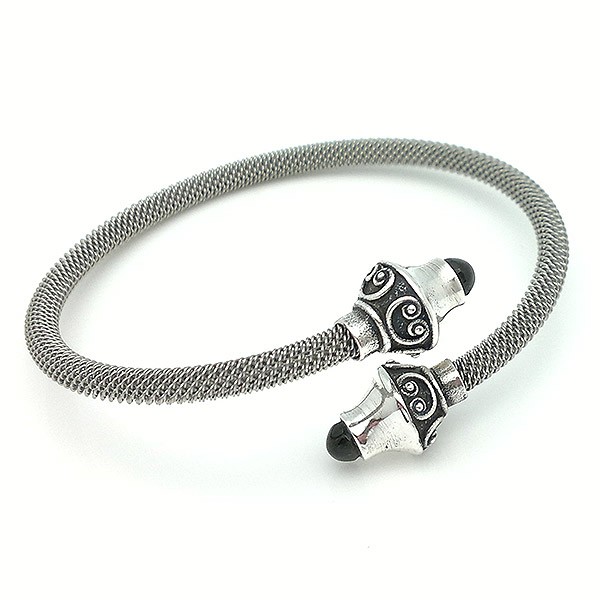Torq Silver
€159.95
Torque in Sterling Silver and Jet.

Urgent shipping in 24/48 hours

Wrapped for gift

100% Secure Payment
Torque type bracelet, made in sterling silver (925mm) and jet by expert artisan goldsmiths. Designed and manufactured in Spain.
Measure: Adjustable.
Other measures:
Thickness: 6 mm
Heads: Maximum thickness 18 mm.
Where do the Torques come from? What are they ?, Next we tell you a little bit about the history of these jewels:
A torque, also written as torq or torc (from the Latin 'torqueo', to twist, due to the twisted shape of the collar) is a rigid and round collar, which is open in the anterior part, like a circular horseshoe. Typically the two points of the torch had sculpted ornaments with spheres, cubes or zoomorphic shapes, and less often human figures. The body of the collar was normally, though not always, covered. Although the most common were the necklaces, there were also bracelets in this way. The torques were made of intertwined metal ropes, usually gold, bronze or copper, and in very few cases silver.
It is important to note that because "torc" means in Old Irish "boar", similar to the Gallic "torcos", a relationship can be established with the sacred value of the animal in Celtic mythology. This would suggest some kind of equivalence between the necklace and the animal symbol for death and resurrection.
The torques were used by several peoples of the Bronze Age, from 1000 a. C., until about the year 300, including the Galatians (or Celts of Anatolia), several Germanic tribes of Scythia and the Persians. However, it is widely known as a typically Celtic necklace, from the time of La Tène, carried mostly by Britons, Gauls and Iberians.
One of the earliest known representations of a torque is found in the Hirschlanden Warrior, an itifálica statue of a naked warrior made of sandstone, the oldest life-size anthropomorphic representation of the Iron Age found north of the Alps. It was made by the Hallstat culture in the early Iron Age (800-475 BC) and can be observed at the Württembergisches Landesmuseum in Stuttgart.
The representations of gods and goddesses in Celtic mythology frequently show the use of torques. The famous sculpture of the "Dying Galatian" [1] Roman copy of the original Greek, shows a warrior, Gaul, wounded who is naked except for the torque. Examples of this have been discovered in Great Britain and Europe during archaeological studies [2]. A notable example was found in the Anglo-Saxon mound of Sutton Hoo.
Some authors think that torque was a feminine ornament for women until the 4th century BC. C., when it became an attribute of warriors. However, most authors disagree, arguing that they were used as a sign of nobility and high social status: a military decoration given to warriors for their actions in battle, as well as a divine attribute, based on many representations of gods Celts carry one or more torques. They have found images of the god Cernunnos carrying a torque around his neck, torques that hang from his antlers or that he keeps in his hand, as well as torques in the tombs of Celtic princes.
Because the Roman consul Titus Manlius after challenging a Gaul to a fight and killing him, took his torque and always wore it, he received the nickname Torquatus (the one that carries a torque). In this way the Romans adopted the torque as a decoration for distinguished soldiers and elite units during the Roman Republican period.
The two main torques of the Final Bronze found in the Peninsula (and more specifically in what is now Extremadura) belong to two sets of goldsmiths in gold, called respectively Tesoro de Berzocana (Cáceres, 1964) and Tesoro de Sagrajas (Badajoz, 1970). Both are currently in the National Archaeological Museum of Spain, in Madrid.
Notable pieces have also been found in Arguedas (Navarra), in a Celtiberian necropolis of the second Iron Age (300 BC), which due to the incinerations of the body were found fragmented. Only one was found in excellent condition, bronze, with two flattened balls at each end.
Also, on the coast of Lugo was a solid gold torque, a prominent piece belonging to the asturnorgalaico type, dated in the 1st century. It comes from Chao do Castro, municipality of Burela, and belonged to the Blanco-Cicerón Collection, of the which happened to the Gil Varela. The characteristics of this torques are typical of this type: rod of circular section, wires rolled in the two thirds ends and frills conical and scotland. The central third has a good filigree work. Nowadays it is exhibited in the Provincial Museum of Lugo. Measures 211 mm in diameter and 65 mm in length of the auctions, with a weight of 1,812 grams of gold of good quality (23 carats), weight well above the average weight that the Celtic torques used to have, about 500 grams.
82TOR17
No customer reviews for the moment.
